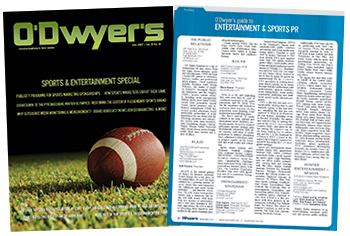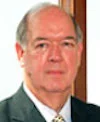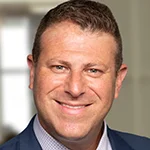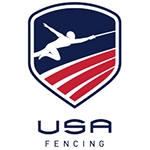|
|
The cost of sports sponsorships keeps increasing. Athlete spokespersons are no longer afraid to speak their minds about societal issues, even if sponsors would prefer they wouldn’t. Too frequently, reports of athlete spokespersons’ actions end up in police reports. These occurrences aren’t new. What is new is that sports’ reporting has largely changed: The bigger the star, the more prominently and longer unsportsmanlike conduct will be reported, often putting sponsors on the spot as they are increasingly at risk of becoming part of the story.
When I managed sports marketing programs, first at Advance Public Relations and later, for almost 25 years at Burson-Marsteller, and was also responsible for the creative publicity input and media outreach, clients would always ask five questions:
|
|
• “How do I know I’m getting my money’s worth?”
• “What sports will get me the most bang for my bucks?”
• “Can you develop a program that will have a long shelf life?”
• “I already am advertising on TV sports events, so why should I spend additional money on a public relations/publicity program?”
• “If I give you money for a PR/publicity budget, can you guarantee that it’ll result in media coverage?”
My answers were:
• How do you know you’re getting your money’s worth from TV advertising? This question is more relevant than ever, because of the ways a person can now avoid commercials and other methods of watching a sporting event.
• PR programs are less expensive than TV advertising and stories in newspapers and on TV are more believable than ads.
• I’m not asking you to curtail advertising. Just give me ten percent of the budget.
• You can create your own program without needing approval from the major sports organizations. This is especially important for small and medium size companies.
• Reporters look for interesting stories. If you can offer that, reporters don’t care if your program is sanctioned by official sporting organizations.
• A savvy publicity program will help expand TV brand awareness and position the brand to consumers as a leader in its category, even if it’s not.
• Because of my journalistic background, I think like an editor or reporter, which includes sports reporting, so I know how to craft programs that will generate news coverage.
• As for which sports will provide the greatest bang for bucks, my opinion hasn’t changed. I recommend a baseball, football or basketball nexus for obvious reasons: They’re covered by the media year-round so a savvy media-friendly publicity program has the greatest opportunity of succeeding.
Athlete sponsorships
It’s no secret that the easiest method for obtaining coverage in sports media is by having an athlete spokesperson. However, athlete spokespersons are as plentiful as leaves falling off a tree. Athletes are also used in multiple TV brand commercials, making some unsuitable to represent a single brand, in my opinion. And, importantly, there’s always the possibility of negative media coverage of recent and current athletes. Peyton Manning, Tom Brady, Alex Rodriguez, Lance Armstong, Tiger Woods, Ryan Lochte, Jose Reyes and Jeurys Familia, just to name a few.
Regardless, it’s possible to stand out in the athlete spokesperson clutter: Here’s how:
• Create your own program.
• Use a well-respected, retired athlete who participated in a sport associated with your client. They’re less expensive and more welcomed by the media than current athletes in the papers every day.
• Make certain the athlete you choose is squeaky clean. You don’t want reporters bringing up negative happenings from the past.
• Use an athlete who’s media friendly.
• Don’t use an athlete famous for one occurrence, like Ralph Branca or Bill Buckner. You don’t want an interviewer to concentrate on one aspect.
Some examples: For Gillette’s sponsorship of MLB’s All-Star balloting program, I used athletes including Bob Feller, Ralph Kiner, Lefty Gomez and coaches like Ernie Banks. When G.E. sponsored the baseball demonstration sport at the 1984 Olympic Games, I used Robin Roberts. For Olympic programs, I used Bob Mathias and other retired Olympians. For a classroom math teaching product using baseball as a tool, I used Monte Irvin. The nostalgia talks resulted in major media coverage with brand mentions and message points that clients wanted.
Campaign rules
Some rules to remember when creating a sports marketing publicity program:
• A sports marketing publicity program can and should be crafted in a manner that will work with or without an athlete as the spokesperson. Example: A sports psychologist is an easy fit; also, because of the interest in preventing injuries to high school athletes or younger, a head trainer from a major sport team works.
• For business media coverage, I’ve often divided spokespersons’ responsibilities: Using the athlete for sports media and a high-ranking corporate executive for business media.
• Programs should be crafted so they can be implemented locally and nationally.
• It’s not necessary to work with the most prominent athletes to achieve major publicity.
• Programs should be workable for many years with minimal changes.
• Do your own due diligence regarding the athlete’s behavior. It’s easily done using search sites.
• Know the media. Publicity success is largely due to knowing which media to pitch.
• Think like a reporter. Each story they cover can be approached several different ways. PR people should have several different angles to pitch.
• Use someone who has been out of the media spotlight for a while.
• A media savvy ambush marketing sports program can gain more publicity than an “approved” program. (Just check the legal restrictions.)
One major advantage of creating your own sports marketing publicity program is the notion that you and your client can establish guidelines that best serve the client and the media without interference from the major sports entities. And that’s something more conducive to publicity success than the ubiquitous “Official Sponsor of” designations that reporters ignore and scoff at.
***
Arthur Solomon, a former journalist, was a Senior VP and Senior Counselor at Burson-Marsteller. He now is a frequent contributor to public relations publications, consults on public relations projects and was on the Seoul Peace Prize nominating committee. He can be reached at [email protected].

 Arthur Solomon
Arthur Solomon 

 Even the most iconic sporting or ceremonial event can be deep-sixed by an overzealous member of the crowd, so crisis comms pros need to be prepared.
Even the most iconic sporting or ceremonial event can be deep-sixed by an overzealous member of the crowd, so crisis comms pros need to be prepared. The Super Bowl, with its massive audience and sky-high ad cost, creates intense pressure to deliver. But when they hit the mark, these ads can become cultural touchstones.
The Super Bowl, with its massive audience and sky-high ad cost, creates intense pressure to deliver. But when they hit the mark, these ads can become cultural touchstones. Teneo has hired Nick Greenslade, deputy sports editor at The Times and Sunday Times, as managing director for its strategy and communications unit in London.
Teneo has hired Nick Greenslade, deputy sports editor at The Times and Sunday Times, as managing director for its strategy and communications unit in London. Jon Schwartz, a former SVP, communications, marketing, digital & social for the Big Ten Conference, is signing up with Prosek Partners to launch a new sports business unit.
Jon Schwartz, a former SVP, communications, marketing, digital & social for the Big Ten Conference, is signing up with Prosek Partners to launch a new sports business unit. USA Fencing has retained Finn Partners ahead of the 2024 Paris Summer Olympics and Paralympics Games.
USA Fencing has retained Finn Partners ahead of the 2024 Paris Summer Olympics and Paralympics Games.


 Have a comment? Send it to
Have a comment? Send it to 
No comments have been submitted for this story yet.